|
Anthony Hopkins Stars as
a real Senior Hero in
'World's Fastest Indian' - based on the true story of Burt Munro. "It's been the best film I've been in," says Hopkins.
Plot Outline: The life story of New Zealander Burt
Munro, who spent years building a 1920 Indian motorcycle - a bike which
helped him set the land-speed world record at Utah's Bonneville Salt
Flats in 1967.
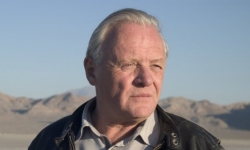
You may be forgiven for thinking this film is about a runner or maybe
an Indian astronaut. Most people would not be familiar with the
Indian motorcycle, let alone Burt Munro, the New Zealand record
breaker.
But you will be glad that you started watching this movie. It
is a most delightful story about Burt, an instantly rather charming
eccentric old character (Anthony
Hopkins), who built an old 1920's
motorcycle in his garden shed.
He then attempts to break the world-land speed record on a machine
designed to originally travel about 90mph. The plot develops into a most
charming and beautiful story of Bert's determination to get to the race
event and the journey is as much of the story as the event itself.
Burt becomes an instantly likable character by everyone he meets. His
charm shines through and he takes everyone he meets at face value and
welcomes all with a smile and a shake of the hand. He meets various
"characters" along the way who he befriends like long-lost
friends, which in these days of prejudice and alienation is quite
refreshing.
This was a very innocent time in 1967 for a New Zealander going to
America, and there is one of the films most delightful and charming
moments when Burt realises all is not quite what it seems.
The film is uplifting and may find you crying and laughing. It does
what is says on the tin and I for one would like to see Mr Hopkins at
least nominated for his role as Burt.
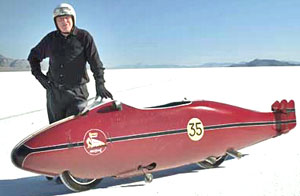
The World's Fastest Indian (2005)
In
60s New Zealand, at the bottom of the world, Burt
Munro takes a 1920 Indian motorcycle and, delightfully without resources
other than his own obsession and a Kiwi wire mentality, spends his
retirement rebuilding the bike and following his dream to go to Speed
Week at Salt Lake in Utah. Under funded, without the support of a team
and against all the odds he not only makes it to Bonneville, he sets a
national land speed record, not once, but again and again.
Tagline: All my life I've wanted to do something big.
Synopsis:
A fact-based movie, written
and directed by Roger Donaldson. It centers on the life of Burt Munro, a
New Zealander who invested several decades building a 1920 Indian
motorcycle.
He then traveled to the Bonneville Salt Flats in Utah, where he set the
land-speed world record in the 1970s.
Main Players:
Anthony Hopkins, Chris Bruno, Jessica Cauffiel
Director:
Roger Donaldson
Producers:
Roger Donaldson, Gary Hannam
Screenplay:
Roger Donaldson

HOPKINS
LASHES OUT AT HOLLYWOOD
Veteran actor Sir Anthony Hopkins has attacked Hollywood for
its "insanity", "self-importance" and
"condescending" attitude to the movie-going public.
"I'm also tired of the camera moving all over the place,
with car chases so cut and edited you don't know what's
happening," he told the Radio Times. "Audiences aren't so mindless as movie-makers think,"
he continued. But the 68-year-old, now a US citizen, said he had no plans to
return to the stage, calling it "monotonous". "I admire actors who can do it, and I'm sure they have a
great life, but I can't stay in any one place for too long,"
he said.
"I have better interests than sitting in [London restaurant]
Le Caprice talking about the problems of being an actor." The Welsh-born star, who was given a lifetime achievement award
at the Golden Globes in January, also had some harsh words for
some of his recent co-stars. "I recently worked with two actors who wouldn't come out
of their trailers for some reason. Can you figure that out? Or
they complain because their trailers aren't big enough.
"It's a job, like any other, so don't make a big deal. Be
polite, treat the crew with respect and don't think you're
different." The actor's latest film, The World's Fastest Indian, casts him
as Burt Munro, a real-life New Zealander who broke the land-speed
record for a 950cc bike in 1967.
"He's different from any of my other characters," said
Hopkins, who won an Oscar in 1992 for playing serial killer
Hannibal Lecter in The Silence of the Lambs.
"I've played these
weirdos, I enjoyed them, but this was
easier." The film reunites him with director Roger Donaldson, with whom
he had a stormy relationship while filming The Bounty in 1983. "He was waiting for me to be awkward, but I've changed so
much, put my impatience behind me," he said.
"I've worked with directors who are tyrannical and
sadistic, but no longer. I'd rather do something else."
That "something else" includes painting. According to
the Radio Times, Hopkins has an art exhibition in May in San
Antonio, Texas. Earlier this year more than 100 of his pen-and-ink landscapes
were sold to benefit a local literacy programme.
The World's Fastest Indian
opened in the UK on 10 March.
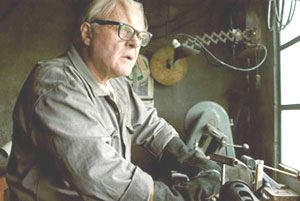
It's certainly not often that we are treated to a
movie that features a senior citizen as the hero. But, the story
is good (and True) and stars Anthony Hopkins as the
obsessed and somewhat quirky true-life senior citizen, Burt Munro, who
was determined to set the world speed record on a motorcycle at
Bonneville, which he
did at 68.
In the late 1960ís, after a lifetime of
perfecting his classic Indian motorcycle and using his retirement money
to finish the job, Munro sets off from the bottom of the world,
Invercargill, New Zealand. He wants to clock his bike at the Bonneville
Salt Flats in Utah.
With all odds against him, Burt puts his
irrepressible kiwi spirit to the test, braving the new world on a
shoestring budget. He makes fast friends of many he encounters along
the way who find themselves swept up in his energy and singular
determination.
Described as a man "who never let the dreams
of youth fade," Munro became a legend along with his bike. Burtís quest in the movie culminates in an
unlikely conclusion and remains legendary within the motorcycle
community to this day.
Munro's 1967 world record remains
unbroken.
His visits to the Utah were not without incident. In issue no. 1 of Motorcycle New Zealand, published
in 1973 Burt is quoted as follows:
"At the Salt in 1967 we were going like a
bomb. Then she got the wobbles just over half way through the run. To
slow her down I sat up. The wind tore my goggles off and the blast
forced my eyeballs back into my head - couldn't see a thing. We were so
far off the black line that we missed a steel marker stake by inches. I
put her down - a few scratches all round but nothing much else".
At the time Burt was traveling at close to 206 mph!
Hopkins said about the role:
"I started laughing when I read the script for
The World's Fastest Indian," he says. "I thought, this is no
way for a 67-year-old man to behave!
"It's been the best film I've been in and
Roger Donaldson is one of the best directors I've worked with. "I originally got the script and
thought it
was just terrific. It was just well written, very very well
written, beautifully written, and so refreshing. Itís not the bang
bang, of big Hollywood movies.
"Itís got much more variety and for me
itís a big change because itís a real winner of a guy. Iíve had a
good career playing psychopaths or uptight people, and Iím fed up with
those, I donít want to play any more of them. "This is my life now, Iím a very happy guy
and Burt Munroís philosophy and character suits my temperament."
The world premiere for "The World's Fastest
Indian" was 13 October 2005 in Invercargill, Munro's hometown and
the southernmost city of New Zealand (and at the time of story
southernmost city of the British Empire). One of those who reviewed the movie in New Zealand
said, "Burt was an extremely eccentric man and a driven one, but
with tons of natural charm. His escapades on and off two wheels makes a
good story. Just when you think you have seen everything, he does
something even more outrageous. "The movie certainly shows us this.
"The movie shows his sweet talk, kiwi
ingenuity and sometimes naivete. But it is a cool story, and in true
geek style he plays with his toy - the Indian motorcycle - tweaking it
from a standard 55mph until it reaches the world record for land
speed."
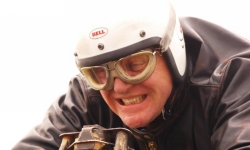
Interview with Wayne Alexander,
builder of the replica Indians for "The World's Fastest
Indian."
When it came time to
prepare for shooting the movie Murray Frances, the line producer, called
on Wayne Alexander of Christchurch, New Zealand, for his long experience
in motorcycle fabrication. He asked Alexander to build two replicas of
the 1920 Indian motorcycle on which Burt Munro had set a world speed
record at the Bonneville Salt Flats in 1967. That record still stands.
How did you happen
to be chosen for this project--what is your background?
"I'm located in Christchurch, New Zealand, and am with Britten
Motorcycles. I was in the business with John Britten, now work in what
was the original factory, and was involved in the race team in 1993 when
I was the race and prototype manager.
"The movie people had a plan in mind to do a replica and Murray
Frances, the line producer for New Zealand, contacted me in June. They
had an incredibly tight schedule, as for a race meeting, and the cost of
missing the date was really high. They planned to start shooting that
September.
"The first replica bike was built in six weeks, taken to the States
for early filming in September, and the second was built in four
weeks."
Why did you build
two replicas?
"To get insurance for a movie in which there is total reliance on a
mechanical object, you need two. We used both hard and long."
Where is the
actual bike ridden by Burt Munro today?
"The actual bike has been restored and is with Tom Henly's
collection in California. I only saw photos of it, but we had the actual
motor and the streamlined tail section.
What was involved
in building these replicas?
"We started with a donor bike, and bought a set of engine cases
from a contact in New Zealand; in fact we got everything from New
Zealand except the oil pumps. Burt's bike was a 1920, and the cases on
the replicas were from a 1924 and a '26, which were essentially the same
except for the serial numbers.
"We needed Scout front ends, and engine and gearbox cases. The rear
wheel was a Powerplus hub, and everything else we made including the
frame, shift and brake levers. The thought really was to make it as
close to Burt's as possible . . . but without the fragility.
"We had Burt's original engine here from Norman Hayes--the actual
Bonneville engine--so we had the exact external dimensions and rocker
gear. There was a second engine that Burt had sent to America and
cobbled together, and that's the one that wound up in the Henly bike.
"There's nothing on the original engine that wasn't modified. He
made the flywheels, rods, pistons, rocker gear, he cast the head. The
carburetor was split in two with a hacksaw; he dropped in a 3/16-inch
brass rod and made it larger. That engine was crucial to us. Burt went
187 mph on it in 1967! I figure it was knocking on 100 horsepower.
"The streamlined body was 11 feet, nine inches long, it was only 22
inches from the ground to the top of the engine, and the bike had a
60.5-inch wheelbase. He ran it on 18- or 19-inch tires. For the movie we
used trials tires and a grinding jig to grind them down to get that
lovely, round case profile."
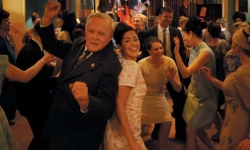
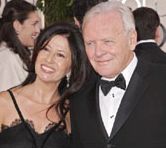
Give me a quick
timeline on Burt Munro.
"Burt was born in New Zealand in 1899, and his parents came from
Scotland. He bought this bike new in 1920 from an Indian dealership. He
built an overhead cam for it, and ran it as a single with a dummy rear
cylinder in back on grass tracks. It was a Charley Franklin engine; he
was Indian's first educated engineer. It was gear-driven from the crank
to the primary and into the clutch, so though it was a pre-unit engine
it was gear driven so it behaved like a unit engine.
"Burt went to Bonneville nine times in 11 years, running both
cylinders of course, and he would leave the bike there but take the
engine back to New Zealand every year to work on it.
"He was remarkable in that he didn't do a lot of drawings. He could
hold huge images in his head. He would put in 30 or 40 hours hand-filing
a piece that he could have done on a mill in a half hour. He stayed at
it 57 years, and had some accidents that would have killed a lesser man.
Burt died in 1978 of a heart condition."
Who did the actual
riding for the movie? Do you appear in it?
"I rode the bike to record the sound track, but Perry Moore (an
Indian aficionado) was the right shape and size, and rode it in the
movie. The clutch was operated with the left foot and the gear change
with the right foot, and it was nice to ride, a docile steerer; I felt
comfortable on it.
"For the sound track we wanted to record the bike tapped out, but
we only had a 2.6-kilometer straight and essentially no brakes, so we
geared it down. It had plenty of power, but it only did 113 mph for the
sound track with the low gearing."
What was the most
difficult aspect of building these replicas?
"The most problems were with the gearbox. It had a 15-horsepower
gearbox and a 50-horsepower motor. Burt had more time to solve the
problems than we did.
"The key things were the heads and rocker gear. The internal
dimensions were not as critical. The replicas were slightly taller in
the engines so we could use proprietary rods; Burt made his own.
"Burt changed the engine over the years. The Scout started as a
600cc, but grew constantly. It ended up as a 1,000cc, but our replica
was 883cc, or 55 cubic inches. It was a replica of his 1962 bike.
"We got the original 1962 tailpiece from Norman Hayes, who has all
of Burt's stuff. The streamliner tail was actually three tails. He used
it one year, but it wobbled badly. The pressure was hunting from one
side of the tail to the other. We effectively took out one degree from
each of the outside blades to make it steer straight. Burt wouldn't have
done that; it dragged a little more air and would have slowed him down.
Having the replica was crucial for scaling.
"The streamlined shell was modeled on a goldfish. Burt liked the
shape. In the replica we added an inch in the hips to accommodate Tony
Hopkins; he'd put on a few pounds. We had to be sure it didn't move the
pressure too far back.
"Other than that, nothing was really difficult except the time. In
a way that helped, as we had to stay on it. There was no choice. Our
team included Sean Chamberlain, who has been with me and Britten for
nine years, and Kerry Norriss, who has done a lot of composite work. He
built the bodywork from a handful of photos.
Where are the
replicas now? Will they play a part in the movie promotions?
"One is in Invercargill and the other in Auckland, New Zealand. As
they say in the movie, Burt spelled Invercargill with one "l"
to save money. The replica in Auckland is returning to me soon, and it
will be in Daytona for Bike Week."
What was it like
to work with actor Anthony Hopkins?
"Let me tell you a story. The only time the bike didn't start was
with a stunt double on it, and the scene was lost. It was with the
setting sun, and he over-choked and over-throttled it; you have to do it
properly for it to start. Roger Donaldson, the director, bit a chunk out
of my ass over that--we never thought that putting a stunt double on it
was a good idea.
"We took it out again at sunset after making some changes, and I
explained to Tony Hopkins how he had to pull a few levers, and do this,
walked him through it. He did everything seamlessly and, bang, it
started! He was supposed to blip the throttle in the scene to wake the
neighbors, but instead he pinned it--held it wide open! It sounded
fantastic, but you could just hear the engine straining; you can see the
scene in the movie. It was right at its limit. I was afraid it was going
to blow up.
"After the scene Tony was so proud of himself he bolted off to the
lean-to to watch the film, and while he was gone Roger asked me what I
thought of it. I said, 'Well, I wouldn't lend him my car!' Later Tony
came out and someone repeated what I'd said and everyone laughed. We all
cringed, as Tony had been very pampered on the set. But Tony loved it
that people were laughing about it. He'd made some noise, and was now
one of the boys!"
17
January 2006 Hopkins is awarded Golden Globe
Sir Anthony Hopkins has accepted a Hollywood Golden Globe for
lifetime achievement saying he had a career "most of us can only
dream of".
The Welshman, who has made his home in Los Angeles, was presented
with the award by actress Gwyneth Paltrow at the ceremony in the city.
The 67-year-old won an Oscar for his chilling role as Hannibal Lecter
in The Silence of the Lambs.
He has also been nominated for six Golden Globes since 1978.
Sir Anthony paid tribute to actress Gwyneth Paltrow - who plays his
daughter in his latest film Proof - after she presented him with the
Cecil B DeMille award for lifetime achievement.
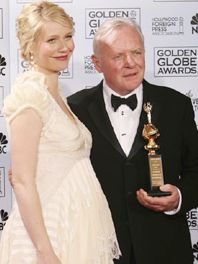
Hopkins
has an art exhibition in San Antonio, Texas in May
Duing his acceptance speech, he told the audience at the 63rd annual
awards on Monday: "I've been around a long time and I never
expected this. This industry has been really good to me." Sir Anthony from Port Talbot, south Wales. said he had worked with
some great stars and, waving his Golden Globe in the air, added:
"I'm not ready to go yet - ready when you are Mr DeMille!"
Paltrow, who last week was reported to have confirmed that she was
pregnant with her second child with husband Coldplay front man Chris
Martin, wore a flowing white gown revealing what appeared to be a
prominent bump.
Elsewhere in the awards, presented every year by Hollywood's foreign
press, the movies Brokeboke Mountain and the Johnny Cash biopic Walk The
Line were the big winners. Brokeback Mountain, the story of gay love between two cowboys, picked
up the Golden Globes for best film, best screenplay and best director
while Walk The Line co-star Joaquin Phoenix, who played Cash, was named
best actor.
Along with Sir Anthony, Rachel Weisz was another winner, although
fellow Britons Keira Knightley and Dame Judi Dench went home
empty-handed.
Weisz won a best supporting actress award for her portrayal of a
pregnant activist in political thriller The Constant Gardener. British actor Hugh Laurie won the best actor in a TV drama for
medical series House, an accolade he missed out on last year
It's
rare to find Anthony
Hopkins in a good mood. A reluctant star, the Welsh Oscar winner is
relaxed, in a Toronto hotel room, the morning after his latest film,
New Zealand's World Fastest Indian, enjoyed a standing ovation at the Toronto
Film Festival. In years past, the usually quiet, no-nonsense actor, has
insisted acting is merely a job.
"I don't want to get too
serious about it, but the foundation for it all for me is the lines, it's just
the text, like learning a dance. I'm not a dancer, but if you don't know the
steps you can't dance. For me the most important thing is the text, just to
get it and, ahh, if it's a really good script then, that's fine." "it's all the better when you have a director like Roger [Donaldson]
who's written it, and who left me to improvise."
Hopkins, who
rarely shows off his penchant for comedy, shines in this true story of Burt Munro a New Zealand man who spent decades
perfecting his classic 1920 Indian motorcycle. At age 68, he risked
everything, including his own life, taking the bike to the Bonneville Salt
Flats in Utah to break the world speed record.
Hopkins attacked the part with an obvious relish and being able to improvise
with a distinctly New Zealand tone, he says, "gives you the
freedom." Yet Hopkins was also determined to remain as authentic as
possible to the real character, first introduced to the world in a documentary
Donaldson made about Munro over 20 years ago. "I had that documentary
that Roger made, and when I looked at it I thought, well, I don't look like
Burt, except for white hair/blue eyes, so I've got to accept the way I
look." Then Hopkins was faced with a much bigger challenge, to replicate
the southern New Zealand accent. "I'd listened to the DVD, get a couple
of sounds and Roger said always watch the rolled 'R'. I said it doesn't sound
like north New Zealand. He said, no, this is southern so it's more Scottish
and Irish and a mixture of Cornish. He sounded like a Devonshire man to me.
Then I'd look at the original Burt and he had certain head movements and
during the filming Roger said, "Tony", he said "Where's Burt
today". I said, "Oh, okay". He said, "You gotta channel
Burt". Because sometimes, it's just like turning a little tuner in my
head. I said, "I forgot the head". So once I do that I can feel
Burt."
But there was more
to this performance than mere technique. Here was a character Hopkins could relate
to in some way. "That's why I accepted the part." But it also meant
working on something less depressing or intense than the likes of Proof, which
he just finished. "Proof was a nice film, and an interesting part, but my
wife, Stella, said to me "You know, you say that you don't take this into
your system any of these parts but you do and you seemed very depressed."
I always dismiss it and say, "Yeah, I just learn the lines", but I
suppose I take it into my subconscious, so I was a little bit down during
that. Then Roger sent me this script, which I'd read just before when
he was trying to raise the money. I thought this would be a real change for me
because I've never played a sort of outlandish, outdoors guy - especially a
mechanic and a motorcycle fanatic - nothing I'd ever experienced before. I
just wanted to do that sort of movie, because, as I've been cast as
intellectuals, disturbed people and all that, but it's boring, because I'm not
like that." At the same time, Hopkins hastens to add he's not exactly
sports loving either. "I don't do sports, but I love being outdoors, I am
very strong and I love the vigorousness of life, and so Burt Munro was just my
cup of tea."
In the meantime, Hopkins' film career continues to go at full steam, beginning
with the now delayed remake of All the King's Men, which he filmed in the
devastated New Orleans, "so it's going to be very interesting when it
comes out, because you think, whoa, I wonder how this is going to look because
it's the biggest American tragedy of all time. A disaster that's so
heartbreaking because what a city and piece of vital American history."
"It's true that I wasn't the brightest student so as a
kid I thought I'll show them, I'll do something different so I became an
actor. I've accomplished everything I wanted to do and I look back and I think
what happened, it's just amazing, given the fact that I wanted to be a
musician originally." "I've been encouraged to write
and I started writing an autobiography but I thought who needs another one?
But maybe I could do it, because I've got a lot of stories about my past and
about the actors I've worked with like Olivier, Hepburn and all those
people."
Anthony Hopkins made his screen debut almost four decades ago in The Lion
in Winter, finally appreciates his life as an actor, commenting, that it's been a wonderful life.
"Over the last few years I've really
begun to appreciate the life that I've had. You know when you look back,
you're too busy living, and I never really appreciated what a great life I've
had until recently looking back and I thought this has been amazing. My wife
said to me, she said, "You're amazing. You're 68, you should be retiring
but you've got two films in this festival, you've got two coming up and then
another one in January". And she told my agent, "It's amazing how
lucky he is". And I thought, God, yeah, I'm still here and, it beats
working for a living."

More than twenty years after The Bounty, Sir Anthony Hopkins has
once again teamed up with Australian director Roger Donaldson. Their
collaboration, The World's Fastest Indian, is the story of Burt
Munro, a quirky New Zealander who set out to convert a 1920 Indian motorcycle
into the world's fastest two-wheeled machine. Munro, played by Hopkins,
eventually broke the land-speed world record on the Bonneville Salt Flats in
Utah in 1967.
Is this movie your first 'biking' movie?
Yeah, but I did play a speed record breaker almost twenty years ago [in Across
the Lake]. I was a man called Donald Campbell who broke the world speed
water record at Coniston in 1966. He was killed when he was doing it.
Are you a motorcycle fan? Have you ever owned one?
No. My father had an Indian cycle during [WWII] and I did get on a bike
when I was in the army. I was doing national service and I fell off very badly
and could have been killed. I was so badly bruised and beat up. So this is the
first time I have been back on a bike in forty years.
What was it that drew you to the script?
It was a good script and I had worked with Roger Donaldson before. I also
liked the nature of this man that I was playing. He was different than any
other character I have played.
What was different about this character?
I have always played these weird characters in movies. I enjoyed them, but
this is just different. [Monro] was a much easier man to play. I like being
outdoors, out in the open [in] Bonneville.
Would you consider that you felt closer to this role compared to
some of the other characters you have played?
Yes because I am not like those other characters. Hannibal Lecter I am not.
Burt Monroe is also an older man who refuses to get old.
There is a wonderful scene in the documentary film that Roger Donaldson
made about him. He says, "You live life more in five minutes on the back
of a motorbike than you can in an entire lifetime. It is better than being a
cabbage watching television all the time. And having a nice couple of pretty
ladies around can help a lot." He was just a guy who loved life. He also
said that once you're dead, you're dead. You never come back. "You're
like a blade of grass and you just blow away. So you may as well enjoy
it." And that is my philosophy. Enjoy it.
Genre:
Adventure
/ Biography
/ Drama / Sport
User Rating: ******** 8.1/10
(933 votes)
MPAA: Rated
PG-13 for brief language, drug use and a sexual reference.
Runtime: 127 min
Country: New
Zealand / USA
Language: English
Color: Color
Sound Mix: Dolby
Digital EX
Certification: Brazil:18
/ Ireland:PG
/ Finland:S
/ Switzerland:7
(canton of Vaud) / Switzerland:7
(canton of Geneva) / Australia:PG
/ USA:PG-13
/ UK:12A
Trivia: The set of Burt Munro's garage/shack was
formerly the site of a gang headquarters in Invercargill, New Zealand.
Quotes:
Antarctic Angel:
I don't think so, granddad!
Burt Munro:
Well, why don't you put your money where your mouth is?
Awards: 1 nomination
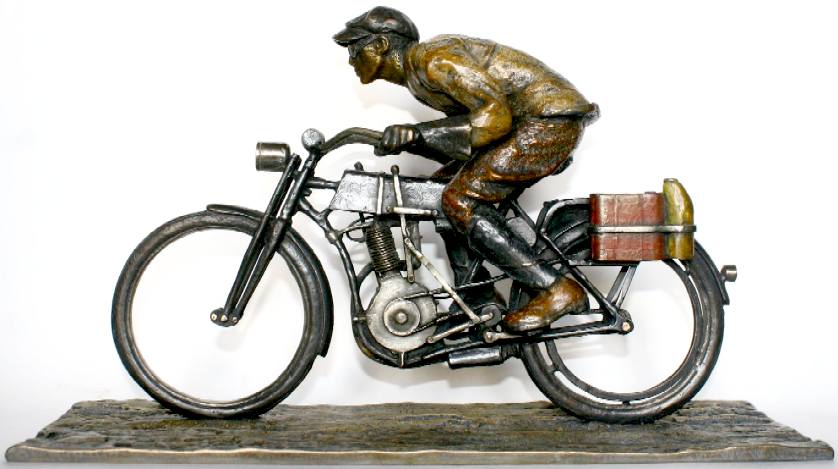
COMMENT
His accent may be off the mark, but Anthony Hopkins is absolutely the
right man to portray real life New Zealand land-speed record holder Burt
Munro. The Brit adopted a shuffling gait and soft-spoken manner that endears
you to loony Mr. Munro, and when the old guy gets on his bike and hits the
Bonneville Salt Flats, you can't help but love him, even if you've never heard
the true-life tale behind The World's Fastest Indian.
Munro is the weird codger of the neighborhood in a quasi-suburban 1960's
New Zealand town. He's reviled by neighbors for burning his lawn instead of
mowing it, pissing in the lemon bushes every morning, and using a power tool
to trim his toenails. The kids, particularly the boy next door, understandably
love him. The thing that elevates him beyond local weirdo, however, is his
love of going fast. Against all odds, he wants to be the fastest man on land
and despite being a broke, retired fella with a heart-problem riding a
jerry-rigged bike made barely after World War I, he does just that.
Like Seabiscuit and
many other ďtrue storyĒ underdog stories, you can't help but root for Munro and his
Indian bike. It is director Roger Donaldson's attention to the film's dusty,
magical feel and Anthony Hopkins's ability to truly revive this strange 60+
man who put his last penny into his thirst for
speed, that makes The World's Fastest Indian such a wonderful
film.
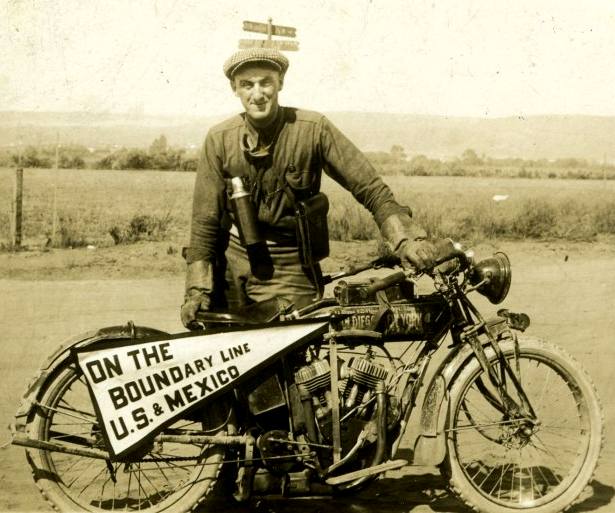
ERWIN
BAKER - CANNONBALL
We
can't help but think that Burt and Cannonball Baker shared similar passions
for the Indian motorcycle. Erwin George "Cannon Ball" Baker (March 12, 1882 Ė May 10, 1960) was a motorcycle and automobile racing driver and organizer in the first half of the 20th century. Baker began his public career as a vaudeville performer, but turned to driving and racing after winning a dirt-track motorcycle race in Crawfordsville, Indiana in about 1904.
Baker was also famous for his record-setting point-to-point drives, in which he was paid to promote the products of various motorcycle and automobile manufacturers. In all, he made 143 cross-country motorcycle speed runs totaling about 550,000 miles (890,000 km).
In 1908, Baker purchased an Indian motorcycle and began entering and winning local races. His most famous victory came in 1909 at the first race ever held at the newly built Indianapolis Motor Speedway. Baker also raced at the 1922 Indianapolis 500, placing 11th in a Frontenac. He later became the first commissioner of NASCAR. Baker was inducted into the American Motorcyclist Association Motorcycle Hall of Fame in 1998.
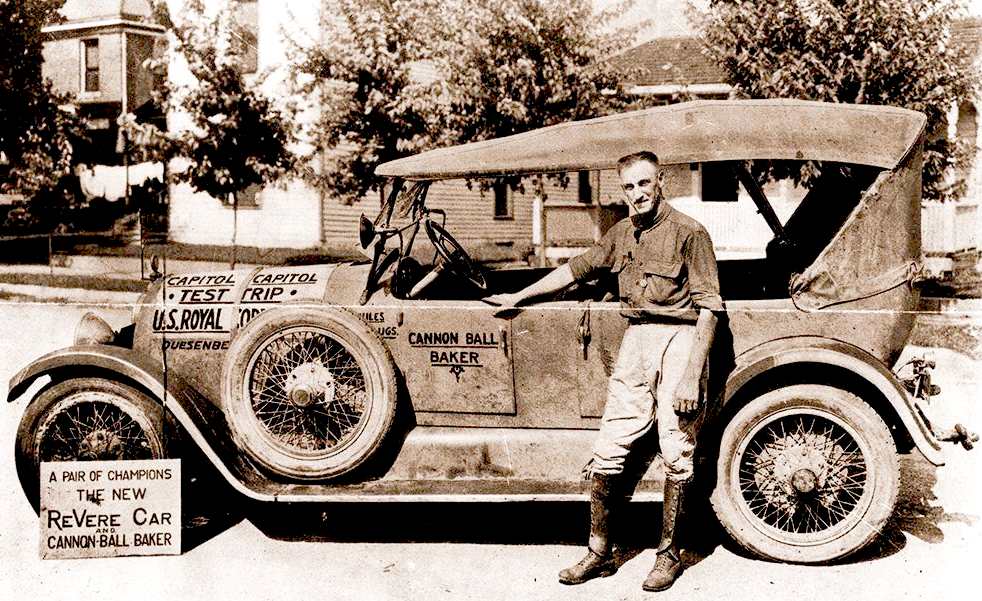
LINKS:
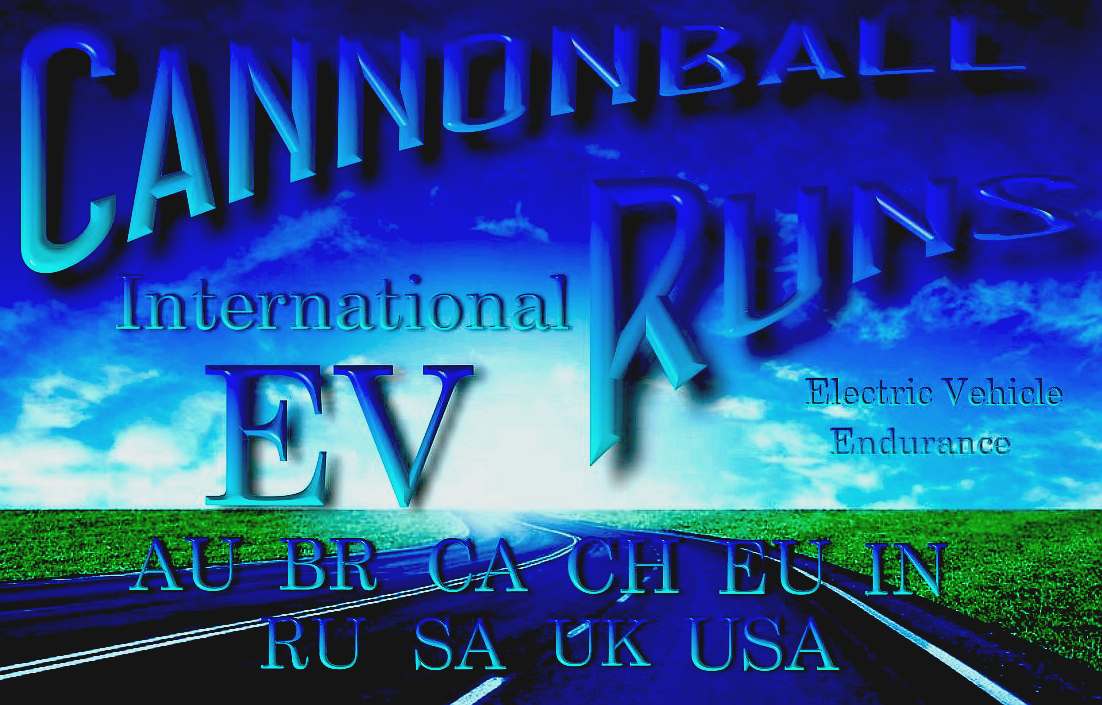
|

![]() logo are
trademarks. All other trademarks are hereby acknowledged.
logo are
trademarks. All other trademarks are hereby acknowledged.








